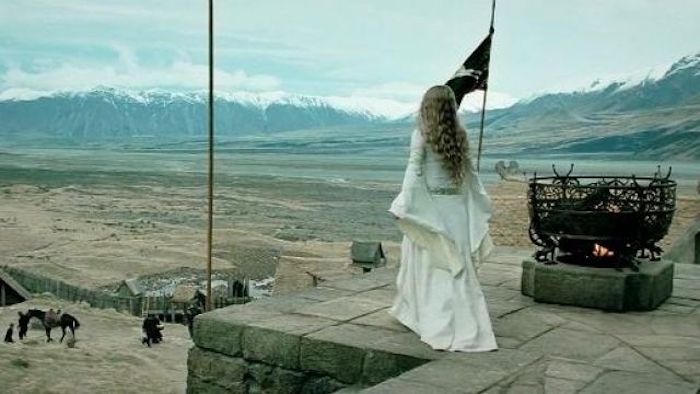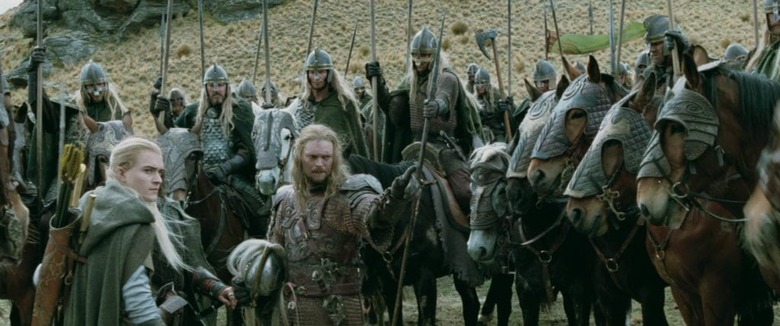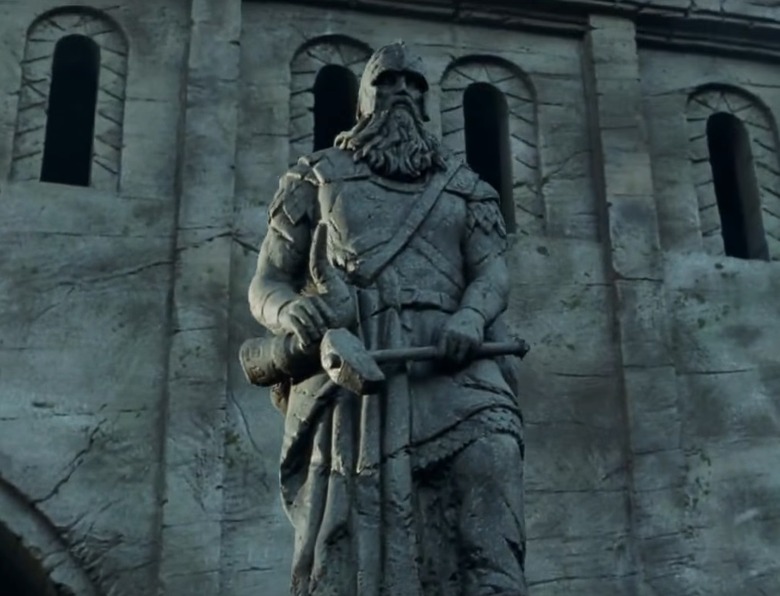The War Of The Rohirrim: The New 'Lord Of The Rings' Movie Explained
"The horn of Helm Hammerhand will sound in the deep one last time," King Theoden of Rohan ominously spoke during the climax of The Lord of the Rings: The Two Towers. And we'll finally know the meaning of that prophecy with New Line and Warner Bros. Animation's upcoming animated film The Lord of the Rings: The War of the Rohirrim, which will tell the story behind the fortress of Helm's Deep.
But who are the Rohirrim? What was the war they fought? And what kind of name is Helm Hammerhand? Thanks to J.R.R. Tolkien's extensive (and exhaustive) world-building, a lot of those answers are already provided. Here is The War of the Rohhirim, explained.
Who Are the Rohirrim?
Simply put, the people of Rohan. They were the horsemen, or Horse-lords, who appeared in The Two Towers and provide a cavalry to Gondor during the climactic Battle of the Pelennor Fields in The Return of the King. A relatively young kingdom who weren't formally established until late in the third age, the Rohhirim are distantly related to the Dúnedain Men of Gondor, but are seen as slightly less enlightened than them.
Here is the description of the Rohhirim from Tolkien's The Two Towers:
'What do you know of these horsemen, Aragorn?' he said. 'Do we sit here waiting for sudden death?'
'I have been among them,' answered Aragorn. 'They are proud and wilful, but they are true-hearted, generous in thought and deed; bold but not cruel; wise but unlearned, writing no books but singing many songs, after the manner of the children of Men before the Dark Years.
In Peter Jackson's The Two Towers film, two notable Rohhirims are Éowyn (Miranda Otto) and Éomer (Karl Urban), the niece and nephew of King Theoden (Bernard Hill), who had been brought under the control of Saruman and his servant Gríma Wormtongue. When Gandalf frees Théoden from Saruman's control, the restored king evacuates his people to the fortress the Hornburg at Helm's Deep, which Saruman's army descends upon in a great battle between Saruman and the army of Rohan.
The Kings of the Golden Hall (or Tolkien's Take on Anglo Saxons)
The chapter in which Tolkien introduces the Rohhirim is titled "The King of the Golden Hall" and is almost a direct reproduction of Beowulf. Why is this relevant? Because the Rohirrim were essentially Tolkien's take on the ancient Anglo-Saxons, though with a dash of the Normans (the strong cavalry) and the Scandinavian (long blonde hair and a warrior culture). The Rohhirims' native language is even modeled off Old English, which Beowulf is written in (you can see an example of this in the Two Towers film, in which Éowyn sings a Rohirric lament that is basically just Old English). And of course, you've got the titular hall of the chapter, Meduseld, which directly translates to mead-hall in Anglo-Saxon — the mead-hall being the primary place of business and hospitality in Anglo-Saxon culture.
Tolkien based much of his history of Middle-earth on that of the history of Britain, though I won't go too deep into it (you can get your fill of that here). But like how the Celtic tribes were driven out by Anglo-Saxon settlers following Roman rule, the Rohhirims had their own equivalent of the Celtic Britons whom they have long been at war with: The Dunlendings. An indigenous hill people who we would later see team up with Saruman in the Battle of Helm's Deep, they were were hunted and persecuted by both the Númenóreans and the Rohhirims, and developed a deep hatred of the latter.
Helm Hammerhand and His...Hammer
Helm Hammerhand was the ninth King of Rohan and the end of the first line of Kings. An archetype of chivalry and also of being a huge hulking warrior, Helm was given the name "Hammerhand" because of his immense strength and skill with his fists — he was known to fight barehanded due to a superstition that if "he used no weapon no weapon would upon bite him."
But his rule was plagued by a war with the Dunlendings that attempted to usurp his rule of Rohan. It began with a feud between King Helm and a powerful Dunlending landowener named Freca, who claimed to be a descendant of King Fréawine of Rohan. Freca attempted arrange a marriage between Freca's son Wulf and Helm's daughter, over which the two of them fought during a King's council meeting in Edoras, ending in Helm killing him with a single blow of his fist. Enraged, Freca's men formed an alliance with the Corsairs of Umbar (pirates!) and the Easterlings ("swarthy" men, so uh, we can assume of "Eastern-inspired" origin) to overthrow King Helm.
Besieged and under attack for the rest of his reign, King Helm died defending the Hornburg at Helm's Deep (which was later renamed in his honor). Though his death was an odd tale, coming after he lost many a battle and both his sons. After one battle, King Helm disappeared and was discovered the next morning frozen in the snow still standing, ready to fight. This led many Rohirrim and Dundelings to believe that even in death, the wraith of Helm Hammerhand still defended the Hornburg.
Helm Hammerhand is supposed to feature extensively in The War of the Rohirrim, which will likely cover his long war against the Dundelings. It would be fascinating if the film digs into the themes of imperialism involved (with the indigenous Dundelings being driven out by the Rohirrim), or if this animated film will play up the Game of Thrones-style political maneuvers and betrayals that led to King Helm's tragic end.



